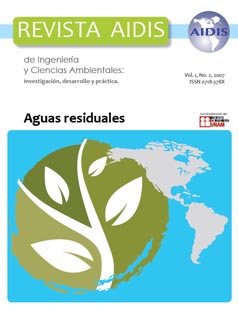Depuración del efluente de una empresa metalúrgica utilizando un Wetland construido
Main Article Content
Abstract
Wetlands have proven to be highly efficient in the removal of pollutants: they are of low‐cost construction and maintenance, operated by unskilled labor and integrated within the environment. The objective of this paper is to evaluate the efficiency of a wetland constructed for the treatment of an industrial effluent (a metallurgical industry). Its dimensions is 50 m length by 40 m width, and depth of 80 cm, with a central partition so that the length‐width relation is 5:1. Its bottom is bentonite sealed, and the plants are rooted on a layer of 1 m of soil. The macrophites used are from the area of the Río Paraná Medio: Eichhornia crassipes (water hyacinth ), Typha domingensis (totora), and Pontederia cordata (aguape), among others. The treatment efficiency was calculated taking into account the influent and the effluent of the wetland. P, CR, N and Zn were analyzed in sediments and plants. The sampling was carried out during 2 years. The wetland efficiently diminished the average concentrations and the variability of the parameters analyzed, except in the case of phosphate and ammonium. The average removals were 86% for CR, 70% for nitrate, 60% for nitrite, 78% for COD, 77% for BOD. The metal concentration significantly did not increase in the in‐depth sediment after 2 years of operation. An increase in the concentration of metals and nutrients in the tissues of the macrophites, as well as the increase of the biomass, represented the principal mechanism of removal of pollutants. The advantage of the macrophites is the possibility of being harvested, which leads at important removal rates in short time. 80% of the surface of the wetland was covered with Eichhornia crassipes , which probably contributed to the oxygen reduction in water. Decreasing the level of water would help to favor the dominance of the rooted macrophites and to increase the oxygen concentration in water. The quality of the effluent improved.
Article Details
How to Cite
[1]
Maine, M.A., Suñe, N., Hadad, H., Sánchez, G., Caffaratti, S., Realini, J. and Bonetto, C. 2009. Depuración del efluente de una empresa metalúrgica utilizando un Wetland construido. Revista AIDIS de ingeniería y ciencias ambientales: Investigación, desarrollo y práctica. 1, 2 (Nov. 2009).
